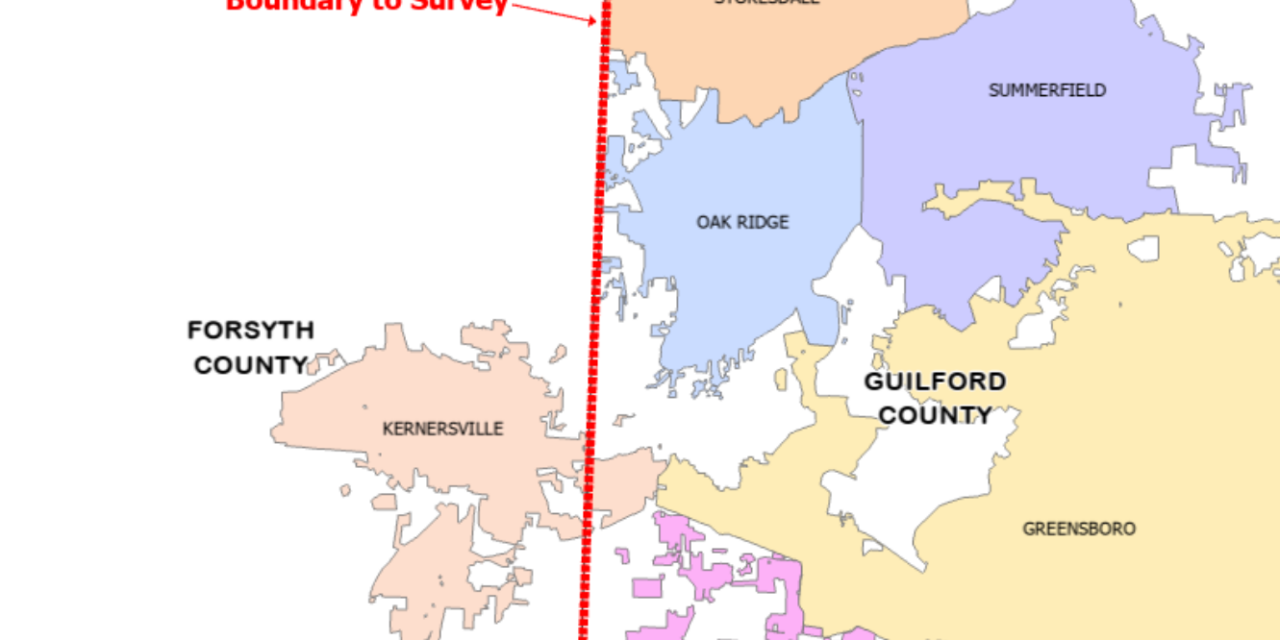Those who follow Guilford County politics remember what a long, drawn out, contentious, convoluted dispute Guilford County had for years and years with Alamance County over the border between the two counties.
Residents who lived in disputed areas went through years of distress and aggravation and county commissioners on both sides of the line went through multiple, sometimes heated, sometimes crazy, attempts at solving the problem before finally agreeing on a straight line and an exact path.
Now Guilford County is starting to address questions regarding the line between Guilford County and Forsyth County, and the Guilford County Board of Commissioners will officially begin that process on Thursday, Feb. 15 by adopting a resolution authorizing a request for the State of North Carolina to conduct a survey to mark and map the boundary between the two counties.
Hopefully, this process will go a lot smoother than it did with Alamance County.
According to county documents explaining the need, “A resolution to establish the boundary line between Forsyth County and Guilford County was adopted by the Guilford County Board of Commissioners in 1964. However, coordinate system changes and the removal of boundary markers has resulted in the exact location of the boundary between Forsyth and Guilford Counties becoming uncertain. This resolution is to request that the North Carolina Geodetic Survey [Division] survey, mark, and map the boundary so that it is legally recognized by the State upon completion of the survey.”
That’s almost exactly the same language that appeared years ago when Guilford and Alamance counties ended up fighting over their line.
The motion is being brought to the board by Guilford County Tax Director Ben Chavis because Chavis and his collections crew have to know exactly who should and shouldn’t be paying property taxes to Guilford County.
State law says that, when two or more counties are uncertain about the exact line between them, state surveyors must assist the counties in “defining and monumenting” the location of the uncertain or disputed boundary in accordance with state law.
Then – hopefully – the two counties can agree on that line and adopt it – though Guilford County’s experience with Alamance County shows anything can happen from there.
For instance, Guilford County and Alamance County commissioners fought for years over whether the two counties should use the straight line laid out by the state or adopt a “zig-zag” line to please the property owners who thought they were in one county but actually lived in another.
If no resolution is found in a dispute of this type, under state law, the case can head to the courts, which may set up a Border Commission to resolve the question.


As is any project involving government entities, this is fueled by money. Just how much money will Guilford or Forsyth County gain or lose with this “defining and monumenting“ of a few properties? Less than the cost of accomplishing the new borders I bet
Would hate to be put into Guilford County if this is ever resolved.
Another waste of our tax dollars.
Will the Guilford County Border Militia please report for duty.